
In this review of the Shargeek 100, we will introduce you to Shargeek’s 100 watt laptop powerbank with a transparent case in detail. The Chinese manufacturer Shargeek produces and sells external batteries as well as power supplies and cables. The designs are appealing and the build quality is high at first glance.
The Shargeek 100 also made a very positive impression on us from the first moment. The highlight of the new power bank is, according to Shargeek, the world’s first transparent case in cyberpunk style, which offers an unobstructed view of the circuit board and battery cells. Extensive information can be called up and settings made via the built-in display.
The Shargeek 100 supports the 100 W fast charging protocol via USB-C and USB-A for 3 devices at the same time, and the 8 built-in round cells deliver a total of 25600 milliampere hours (mAh). It itself is said to fully charge in just 90 minutes and be compatible with a wide range of devices. Various protection mechanisms and a fireproof casing ultimately ensure a high level of safety during use.
Technical Features of the Shargeek 100
| Product Name: | SHARGEEK 100W portable power bank |
| Model: | STM2-2 |
| Output port: | 2*USB-C, USB-A, DC |
| Material: | Fireproof (V0) PC + oxidized aluminum alloy |
| Battery Cell: | 18650 lithium-ion |
| Nominal capacity: | 25600 mAh/93.5 Wh 3.65V |
| Standard Capacity: | 24800 mAh/90.5W 3.65V |
| Dimensions: | 151 x 59 x 46mm |
| Weight: | 579 grams |
| USB-C1 input: | 5V/9V/12V/15V=3A, 20V=5A (Max 100W) |
| DC Input: | 5-24V=3A |
| DC Output: | 3,3-25,2V=3A |
| USB-C1 output: | 3.3-21V=5A, 5V/9V/12V/15V=3A, 20V=5A (Max 100W) |
| USB-C2 Output: | 3.3-11V=3A, 3.3-16V=2A, 5V/9V=3A, 12V=2.5A, 15V-2A (Max. 30W) |
| USB-A Output: | 5V=3A, 9V=2A, 12V=1.5A |
| DC+USB-C2 Output: | 65W+30W |
| DC+USB-A Output: | 65W+18W |
| USB-C1+USB-C2 Output: | 65W+30W |
| USB-C1+USB-A Output: | 65W+18W |
| USB-C2+USB-A Output: | 5V=5A |
| DC+USB-C2+USB-A Output: | 65W+5V=5A |
| USB-C1+USB-C2+USB-A Output: | 65W+5V=5A |
| Charging Technology | Power Delivery (PD) 3.0, Quick Charge (QC) 3.0/4+ |
| Price: | € 239.00 * |
Packaging and scope of delivery
The Shargeek 100 comes in neutral black outer packaging and is nestled snugly in equally black foam along with its accessories.
In addition to the powerbank itself, the package also includes a cloth pouch, a yellow USB-C cable with a length of 150 cm and a multilingual user manual that deserves its name. Optional items to buy for the Shargeek 100 include a sturdy storage box and a foldable solar panel for on-the-go use.
- Shargeek 100 Powerbank
- 1.5m USB Type-C cable
- Fabric pouch
- User manual
The Shargeek 100’s design and build quality
The Shargeek 100 powerbank is essentially an elongated transparent case made of fireproof polycarbonate, through which the control electronics and battery cells are visible. This almost complete view inside, if you disregard the aluminum frame, is one of the unique selling points of the Shargeek 100. A color display is embedded on the top of the case. To the right of the display is a yellow switch for its operation.
On the left side of the case are the four connector jacks, one DC jack, one USB Type-A jack and two USB Type-C jacks. One of the Type-C jacks, USB-C1, is used for charging other devices as well as charging the Shargeek 100 itself. The included yellow USB-C cable is 150cm long and reinforced with black plastic sleeves at the ends. The DC output of the Shargeek 100 provides a maximum of 75 watts of charging power.
We can only title the build quality of the Shargeek 100 as very good. The plugs of the included USB-C cables fit tightly and accurately in the USB-C sockets of the powerbank, the same goes for third-party USB cables and the USB-A socket.
The transparent case cover provides a crystal clear view of the Shargeek 100’s inner workings, but it is also susceptible to scratches and dirt (note: a protective film is still attached in the pictures). From some perspectives, a rainbow effect is created, which is reminiscent of an oil film on a water surface. A nice gimmick: Some components on the control board are labeled.
The eight built-in Samsung lithium-ion battery cells each have a capacity of 3200 mAh and have been tested to UL9504A standard.
The Shargeek 100 in practice test
The practical test covers the display, the operation via function key and the charging behavior of the Shargeek 100. We tested it together with various third-party devices, both for charging and charging. As an example, we present a fast charging process using a Samsung Galaxy S20 cell phone, which, along with the other S20 models, was the first smartphone ever to receive Power Delivery 3.0 certification 3 years ago.
Colorful display provides a lot of information
When we connected a device or power source to the Shargeek 100 during testing, its display turned on automatically. It then provided detailed information about what was going on. This included.
- The currently used ports as an icon in the top left corner,
- Voltage (volts), current (amps) and power (watts) of the charging or recharging operations of the various ports at the bottom left,
- Voltage, current and capacity of the entire battery pack, the latter as a colored status bar in percent at the top right and finally
- the system status at the bottom right, which shows the temperature of the battery and board and the current runtime of the system in HH:MM:SS format.
If multiple devices are connected, the port shown at the bottom left can be changed by briefly pressing the function key, this also enters ROLL and TOTAL mode. In ROLL mode the port display changes automatically after 5 seconds to the next used port, in TOTAL mode only the total output power of the powerbank is displayed.
After a set period of either 1 or 5 minutes without operation, the display will turn off by itself. It can be reactivated by briefly pressing the function key, but it can also be turned off permanently. A small flaw in the truest sense of the word is the hard-to-read digits of the charging bar, which indicates the current capacity in percent. A bold font could definitely have been used here.
The operation of the Shargeek 100 via function key
The function key of the Shargeek 100 provides access to the second user interface, where information and smaller functions can be called up. A long press on the function key accesses the selection menu of the second user interface. With a short press of the key, the individual sub-items can be scrolled through. To open the sub-items and make settings there, long press the key again.
The subpages of the second level one after the other: The DC Output Setup page allows you to configure the DC output parameters. By default the DC output is set to 12 volts, the voltage can be changed in 1 or 0.1 volt increments between 3.3 and 25.2 volts. The Battery Info sub-item displays the voltage of the 4 battery cells, the remaining capacity in watt-hours, the previous charge cycles and the estimated remaining battery life.
Under Temp Units the temperature unit can be changed between Celsius and Fahrenheit. Timer resets the stopwatch that is started when a device or charger is connected. In Display Settings, the time to turn off the display can be set and its orientation can be rotated 180 degrees. The last two sub-items can be used to turn off the powerbank or exit the second system level of the user interface.
The function key is not absolutely necessary for using the powerbank. We only had to use it occasionally for the test of the Shargeek 100. It is necessary, for example, for using the DC port. This has to be turned on and off or configured via the menu. The button requires a strong pressure when pressed. This makes it a bit more difficult to use, but also prevents unintentional use. We find the implementation of the navigation largely intuitively designed with only one button, but it would definitely be more convenient with 2 buttons. The English menu language cannot be changed. We find it a pity that previously made settings are not retained after switching off and on again.
Charging other devices with the Shargeek 100
For this test of the Shargeek 100, we charged quite a few different battery-powered devices with low to medium power with it and noted the key data for the charging process in each case. As an example of such a charging process, we use that of the Android phone Samsung Galaxy S20 in super-fast charging mode.
For the test, we used the USB C2 Out port on the Shargeek 100, but both of its USB Type-C ports are capable of the PD 3.0 (PPS) charging protocol, which the Galaxy S20 also supports for the first time. In general, we left the charging limit of the S20 enabled at 85% of its battery capacity. The Shargeek 100 was correctly recognized as a “super-fast charger” by the Android operating system.
If we activated super-fast charging in the settings of our Galaxy S20, we received a high charging power of about 20 watts at the beginning of the charging process and thus almost exhausted the S20’s maximum charging power of 25 watts per PPS protocol. Over time, the charging power decreased continuously, or more precisely the charging current (amps), but the voltage of approx. 9.2 volts remained the same.
After 40 minutes, the charging process was finished. During this time, we charged the S20’s battery from 12% to 85%, i.e. by about 2920 mAh. In total, the S20 has a battery capacity of 4000 mAh. The Shargeek 100 lost 12% of its former 100% capacity during the process, corresponding to about 3072 of 25600 mAh total capacity.
It did not get warmer during this process, only its display showed a slight temperature increase of maximum 3 °C for the battery and 5 °C for the PCB, whereas the S20 got noticeably warmer. We tested at a room temperature of 25 °C.
Charging the Shargeek 100 in the test with third-party chargers
Sooner or later, even the Shargeek 100 with its 25600 mAh battery has to be charged. The USB-C port “USB-C1” is exclusively used for this. If you want to charge the Shargeek 100 in the advertised 90 minutes, you need a powerful fast charger, which Shargeek also offers. Otherwise, you should allow plenty of time to charge the powerbank, at worst even a whole night.
We tried several different chargers for charging the Shargeek 100. The travel adapter included with our Samsung Galaxy S20 with 9V-1.67A (15W) or 5V-2A (10W) failed to charge the Shargeek 100, the flashing charging indicator remained at 0 here. More successful was the use of a USB hub from Corsair, which also has ports with “only” 15 watts of charging power, but was “accepted” by the Shargeek 100. However, the charging process took a comfortable 9 hours with 11.4 watts of charging power.
Charging was much faster with the charger of our system camera, which can deliver a charging power of around 27 watts (9V-3.0A). The complete charging process was completed in about 4 hours. The temperatures increased by 12°C for the battery and 15°C for the circuit board during the charging process.
Before buying a new fast charger, it can be worthwhile to try out all the chargers with USB output in the household on the Shargeek 100. This accepts many configurations with a voltage of 5, 9, 12 and 15 volts at 3 amps each and 20 volts at 5 amps. Simultaneously charging other devices and being charged itself, by the way, the Shargeek 100 masters this for safety only from a battery charge of 50%.
Safety features
The Shargeek 100 powerbank independently monitors various parameters and may issue warning messages if they are exceeded or undercut, for example. For example, when the DC output is switched on, the warning message appears that no DC input devices may now be connected.
Further warning messages concern the overheating of the board, a too high or too low temperature of the battery cells or a too low battery voltage. The overheating protection for the circuit board triggers from 80 °C. In order to protect the sensitive batteries, the outputs are switched off at temperatures above 60 or below -15 °C.
Especially when charging several devices at the same time, the battery and PCB temperatures increased during our test, even if only slightly. For example, we observed a maximum increase of 7 °C in the battery and 11 °C in the PCB when charging three devices via USB at the same time. We did not use any fast-charging devices. This has to be considered in higher ambient temperatures, especially in sunlight, in order not to provoke an automatic shutdown of the powerbank.
During our test, we did not receive any warning messages apart from the note for the DC output being turned on. Our achieved temperatures were not high or low enough for that in practice.
At 93.5 watt-hours, the Shargeek 100 does not exceed the total capacity of 100 watt-hours allowed by TSA, FAA and EASA standards and can be carried in carry-on luggage on flights. It also features high-voltage protection on all inputs and outputs and a short-circuit fuse.
Shargeek 100 review conclusion
The Shargeek 100, formerly the Shargeek Storm 2, is available for purchase for $239 on Amazon at the time of testing (currently € 239.00 *), $219 at Galaxus, and $209 at the manufacturer’s own online store with $20 off. These prices are partly higher than competitor products with comparable or higher performance, but not all of them also have all the capabilities of the Shargeek 100. The color display with a lot of detailed information, high-quality battery cells from Panasonic and an almost completely transparent case with very good workmanship help it justify the higher price.
During our test, however, it made a very solid impression on us, especially in terms of its charging performance. The fast charging function via USB PD 3.0 worked perfectly with our Galaxy S20 cell phone. Charging several different devices at the same time was no problem either, and the display provided the usual detailed information for all of them. The temperatures during charging always only increased moderately. Thanks to various technical precautions, it offers a high level of security and can also be carried in hand luggage on flights.
A suitable charger is required for charging. Not all of our available chargers worked in the test, with others the charging process took 4 to 9 hours. If you do not always have the time or patience, you will have to get a fast charger. Such a charger is offered in addition to other accessories in the manufacturer’s store. If you equip the Shargeek 100 with a foldable solar panel, which is also available, it becomes a self-sufficient travel companion on longer hikes or bike tours. Especially for this purpose, we find them predestined.
Shargeek 100
Workmanship
Hardware
Performance
Value for money
94/100
At a slightly higher price, you get a powerbank with very good performance and build quality, interesting design and many safety features with the Shargeek 100.


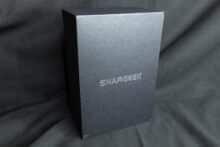

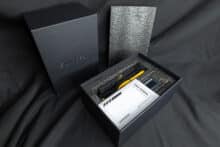
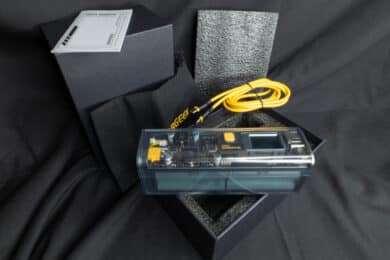

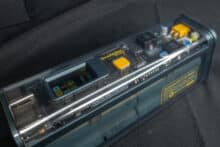
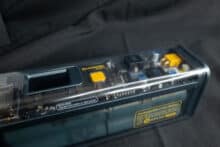
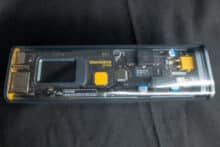


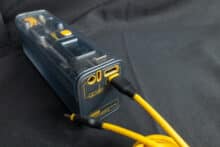

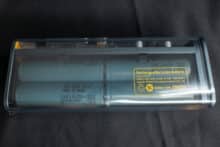
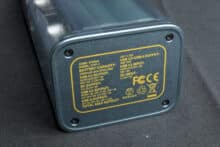

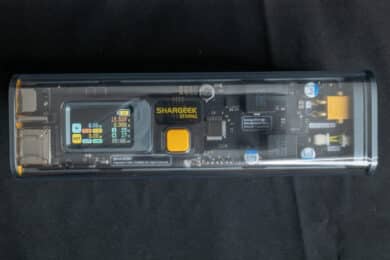

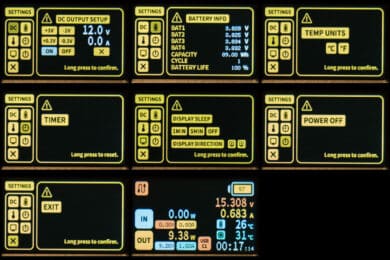
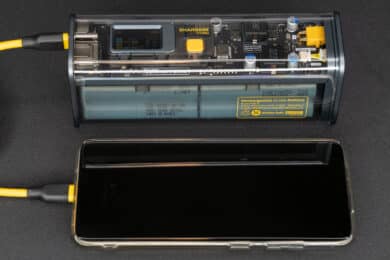
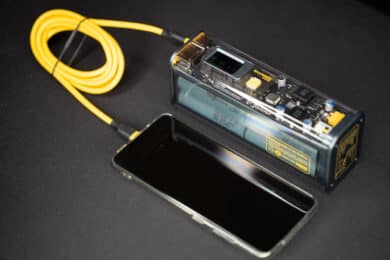
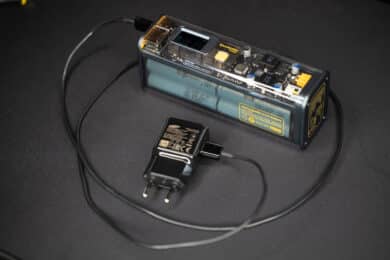






No replies yet
Neue Antworten laden...
Gehört zum Inventar
Beteilige dich an der Diskussion in der Basic Tutorials Community →